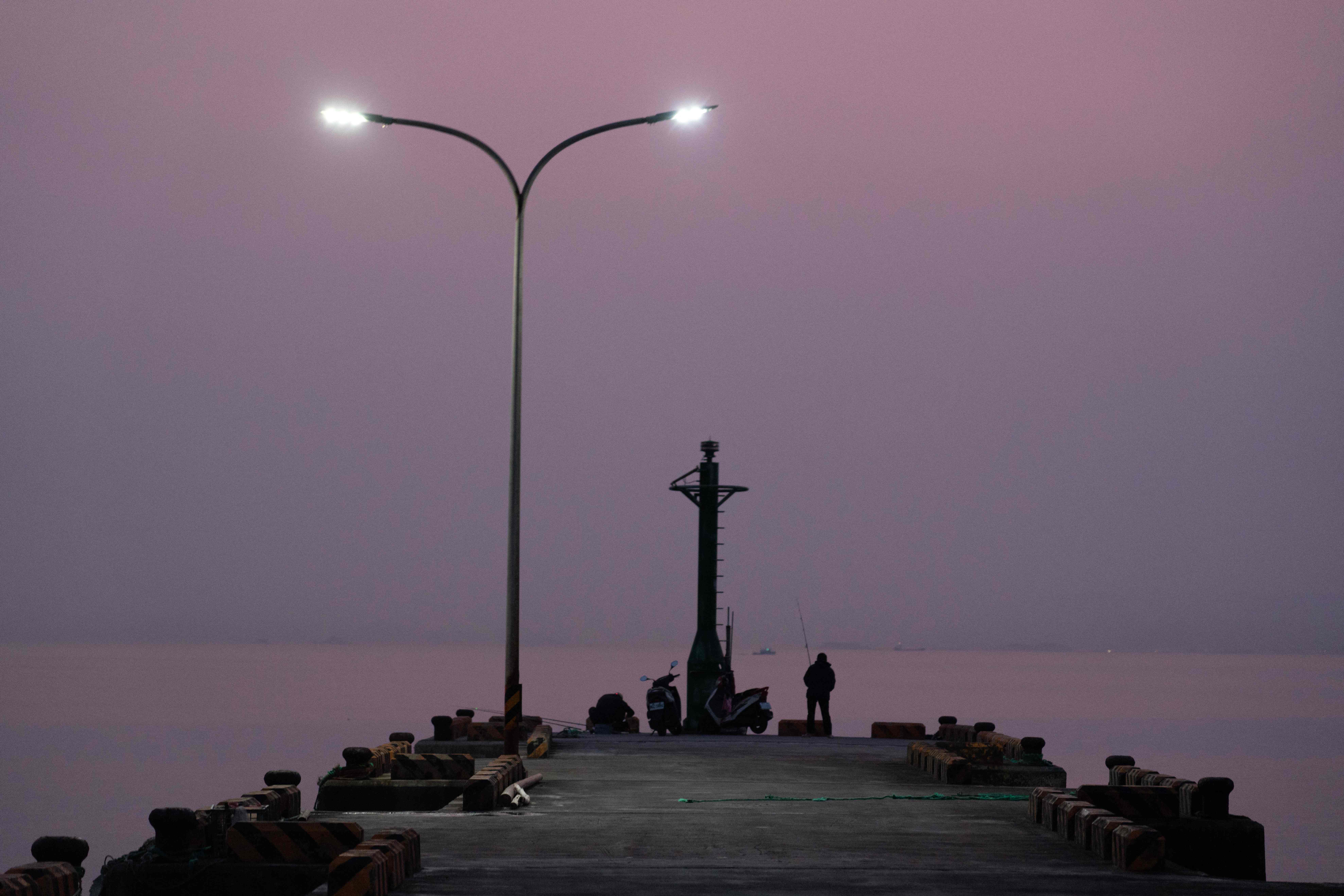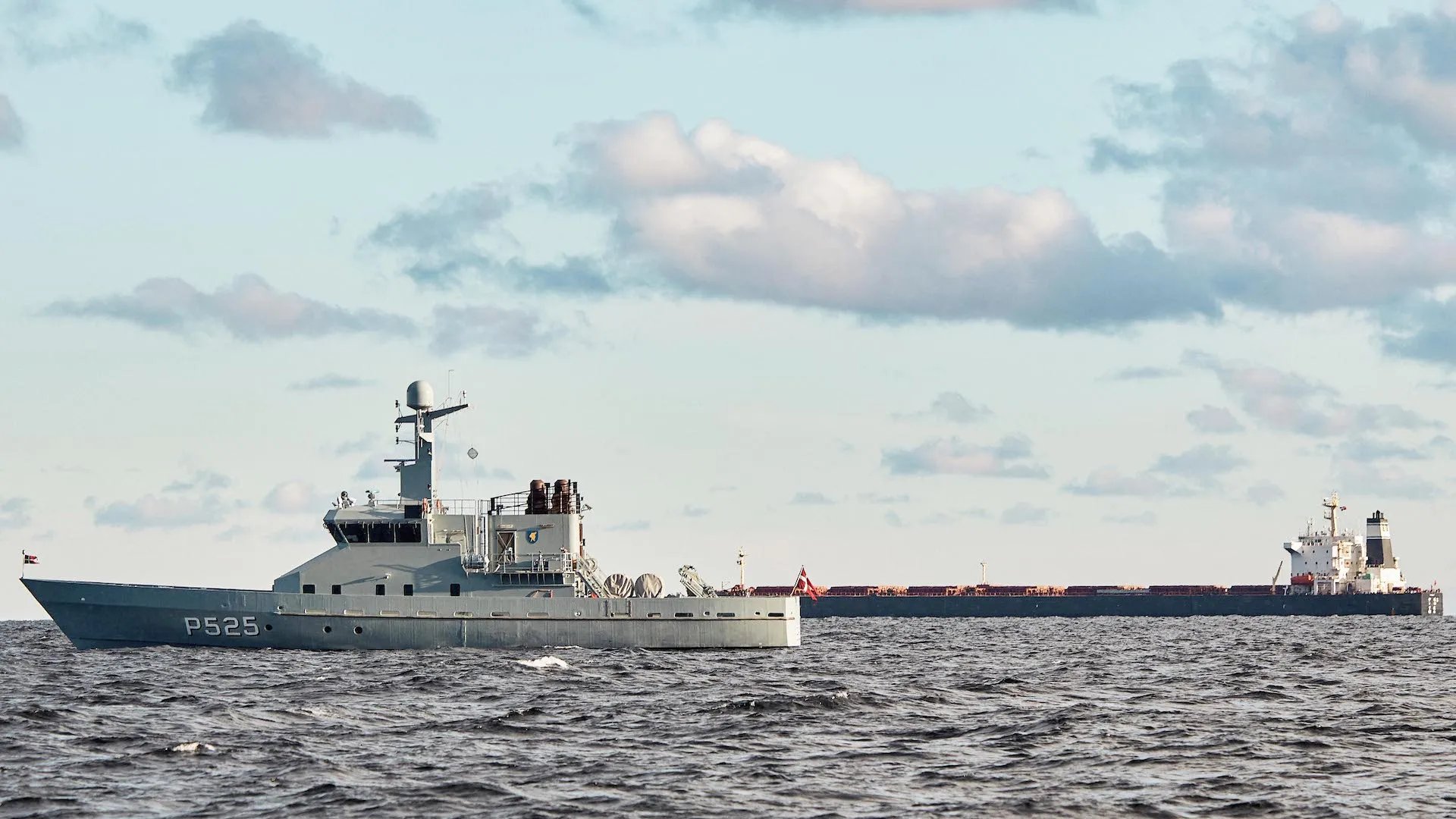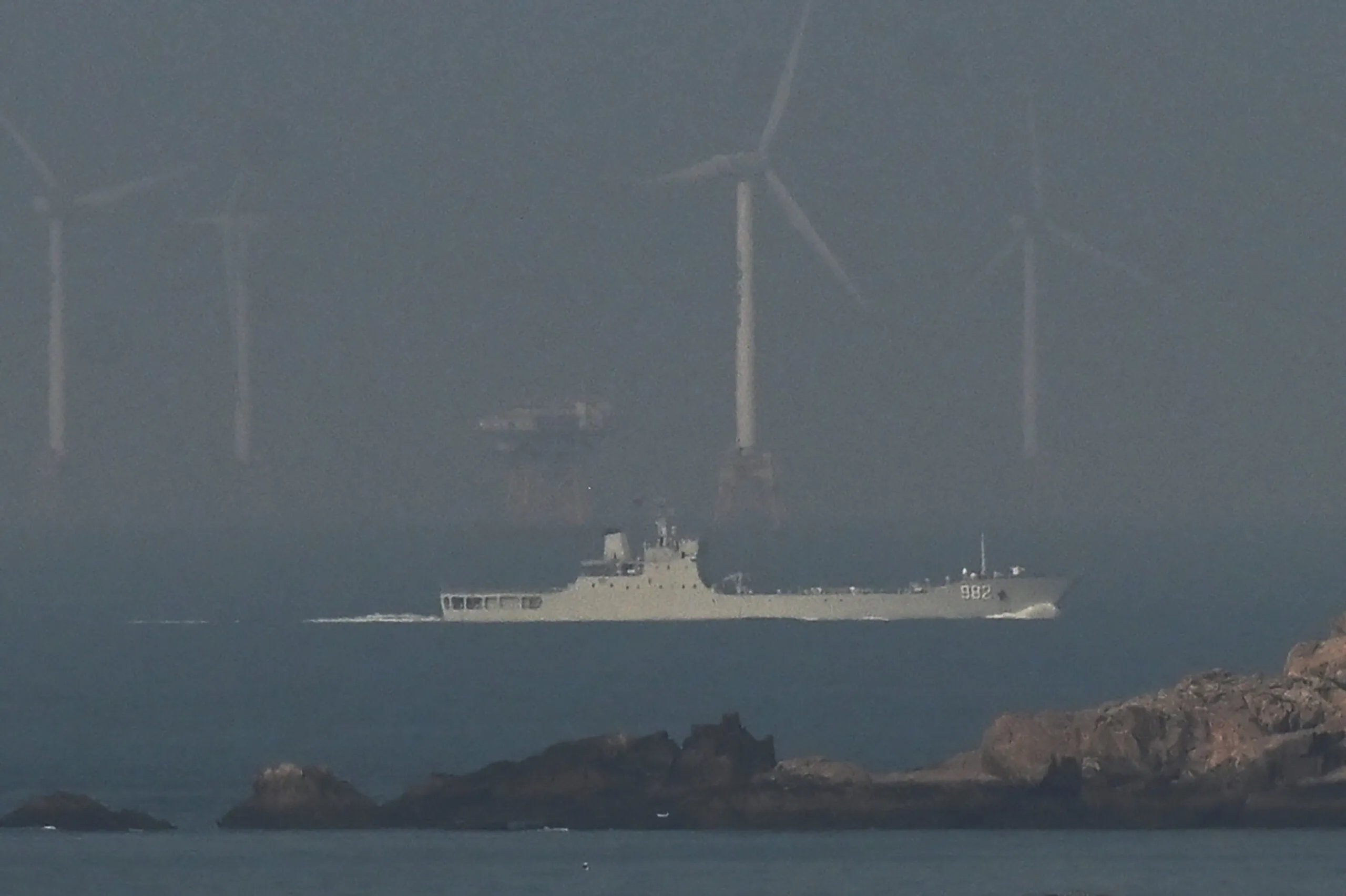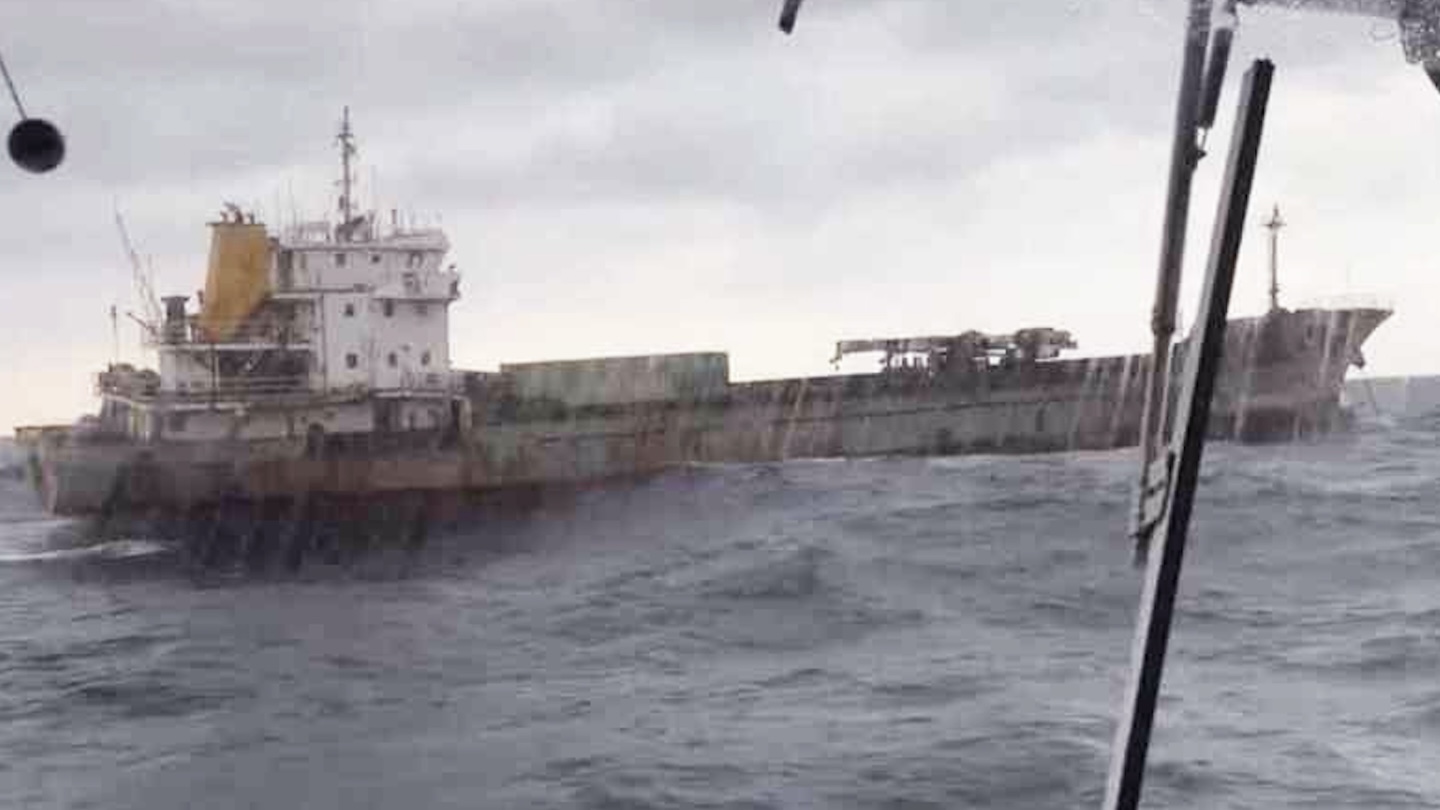A Chinese-owned vessel is suspected of severing an undersea cable off the Taiwanese coast recently, according to authorities on the island. Taiwan’s coast guard requested that the cargo ship return to shore for an investigation, but it eventually continued its passage. Last Friday’s incident is the latest to have affected Taiwanese cables and is part of a pattern of similar events that have also occurred recently around Europe.
The international fiber-optic telecom cable was cut early Friday morning, around 7:51 a.m., near Taiwan’s Keelung Harbor. The Trans-Pacific Express cable belongs to the Taiwanese government-run Chunghwa Telecom, which connects East Asia with the U.S. West Coast. According to Chunghwa, communication could be rerouted via other cables, with services experiencing minimal disruption.
The cable in question is one of around a dozen connecting Taiwan to other countries in the region, and Chunghwa says the break was caused by a vessel snagging it and dragging it across the seabed.
At the center of the incident is the Shunxin-39, a Cameroon-flagged cargo ship that Taiwanese authorities say is owned by Jie Yang Trading Limited, a Hong Kong company headed by Guo Wenjie, a citizen of China. Taiwanese authorities say that seven of the crew members on board were Chinese nationals.
Confusingly, the ship was also registered in Tanzania and appeared to be operating under two separate identities on the Automatic Identification System (AIS) — the tracking system that provides a ship’s name, specifications, and coordinates in real-time. Vessels being registered in more than one location are not unheard of in international shipping, where the precise owners of a given ship are frequently hard to determine.
According to Col. Ray Powell, director of SeaLight, an initiative at Stanford University that tracks China’s pressure tactics aimed at Taiwan, the Shunxin-39 had actually used as many as six different AIS numbers over the past six months, and at least two different names.
Multiple reports indicate that Taiwanese authorities believe that the vessel was involved in the incident, whether deliberate or otherwise.
Combined with the multiple identities, suspicions have been raised by the fact that the vessel was sailing back and forth in waters near Taiwan in the past two weeks, according to one Taiwanese security official.
“While its intentions remain unclear, the possibility of a Chinese provisional vessel conducting gray zone harassment couldn’t be ruled out,” the Taiwanese Coast Guard said.
The cargo ship was intercepted by the Taiwanese Coast Guard around eight miles off the north coast of Taiwan late on Friday, after a nine-hour mission to track it down.
Although it was ordered to move closer to shore for an investigation, rough weather prevented any member of the Coast Guard from boarding the vessel.
Instead, the Shunxin-39 was able to continue en route to the Port of Busan in South Korea. The Taiwanese Coast Guard says it has notified the corresponding South Korean maritime agency about the case.
Although they were not able to investigate the vessel, Taiwanese authorities say they have collected radar data and navigation records that will be provided to prosecutors for further investigation.
As to the suspicion of potential deliberate sabotage by the Shunxin-39, the deputy head of Taiwan’s digital ministry, Herming Chiueh, told The Wall Street Journal that the cable-cutting was likely intentional. “You need to accidentally [drop your] anchor on the cable, and then you need to accidentally turn on your engine with the anchor down, and even [if] you realize your anchor is down, you need to keep the engine moving until you cut the cable,” Chiueh said.
Chiueh added that he recently met with European counterparts to discuss the vulnerability of undersea cables. He said that there was a growing consensus that vessels suspected of sabotage needed to be stopped and searched immediately because once it is “sailing back to China, you can’t do anything.”
Whether deliberate or not, the incident last Friday was the latest in a series that has affected Taiwanese undersea cables.
In February 2023, for example, two undersea internet cables running between Taiwan and the island of Dongyin, part of the Matsu Islands, and roughly 30 miles off the coast of China, were severed by a Chinese fishing boat and a cargo vessel, according to Taiwan authorities. The island was left without internet access for weeks.

In Europe, meanwhile, disruption to undersea infrastructure is fast becoming a regular feature, especially in the Baltic Sea.
In a recent incident of possible sabotage in the Baltic, on Dec. 25, 2024, an undersea power cable between Finland and Estonia was severed, with suspicion falling on one of Russia’s so-called shadow fleet of oil tankers. After being seized by Finnish Police, the ship in question, the Eagle S, was found to be “kitted out with special transmitting and receiving devices that were used to monitor naval activity, according to a source with direct involvement in the ship,” Lloyd’s List reported.
A month before that, Denmark confirmed it was monitoring a Chinese cargo vessel at the center of allegations surrounding damage to two communication cables in the Baltic Sea.

In another prominent incident, back in October 2023, a Hong Kong-registered containership, the Newnew Polar Bear, was accused of damaging the Balticconnector natural-gas pipeline and data cables by dragging its anchor along the seabed in the Gulf of Finland. Also in this incident, the suspect ship rapidly left the area, headed toward Russia, without authorities investigating it.
Incidents like these have highlighted the vulnerability of critical undersea infrastructure to sabotage, especially as part of so-called “gray zone” tactics or a hybrid warfare campaign of the kind that NATO officials have repeatedly warned Russia is currently embarking upon.
For Taiwan, the concerns are very much the same, although China is the antagonist.
Taiwan already faces regular large-scale Chinese military maneuvers directed at it, including practice blockades of the island as well as exercises featuring so-called “precision strikes.” This is in addition to less-obvious tactics designed to undermine Taiwanese self-rule and democratic institutions.

Any Chinese military move on Taiwan — which Beijing views as a rogue province that is fully within its sovereign territory — would very likely be preceded by efforts to knock out undersea communications infrastructure, strangling the data flow to and from the island.
Only last month, the Taiwanese military ran a war game based on potential Chinese aggression, in which one of the scenarios involved a communications blackout caused by the severing of undersea cables. Meanwhile, the importance of having more robust communications is something that Taiwanese officials have been concerned with for some time now.
So far, it has been far from easy to attribute cable-cutting incidents to any particular culprit, be it Russia, China, or another actor altogether, but there seems little doubt that these kinds of activities are increasing.
With the Shunxin-39 escaping investigation on this occasion, it seems unlikely that the cable cutting off the Taiwanese coast will ever be traced definitively back to Beijing. On the other hand, the incident is a stark reminder of the vulnerability of this kind of critical infrastructure. For Taiwan, in particular, it will also be seen as another example of China’s willingness to employ a wide range of tactics, many of them unorthodox, to try and undermine the island’s independence.
Contact the author: thomas@thewarzone.com
